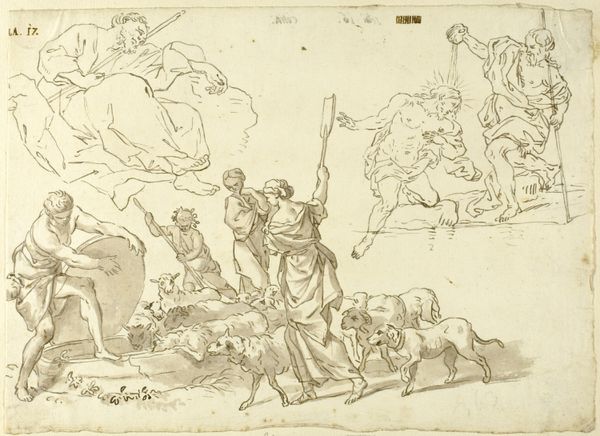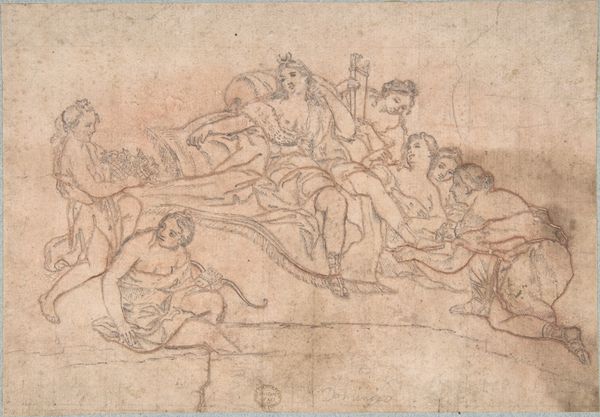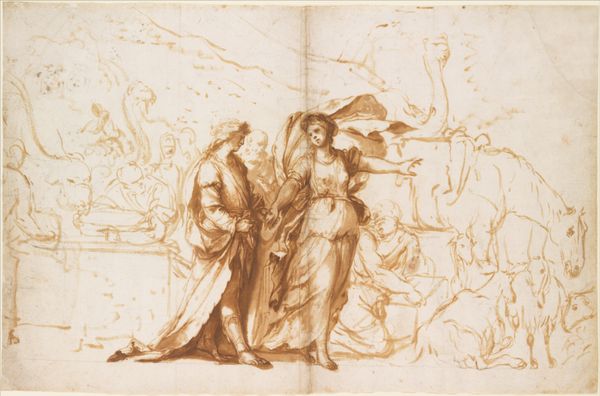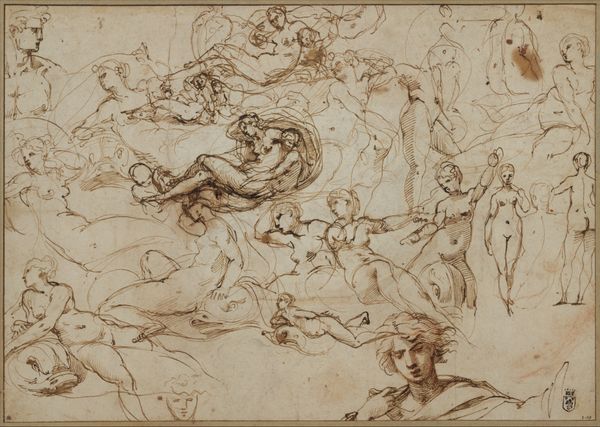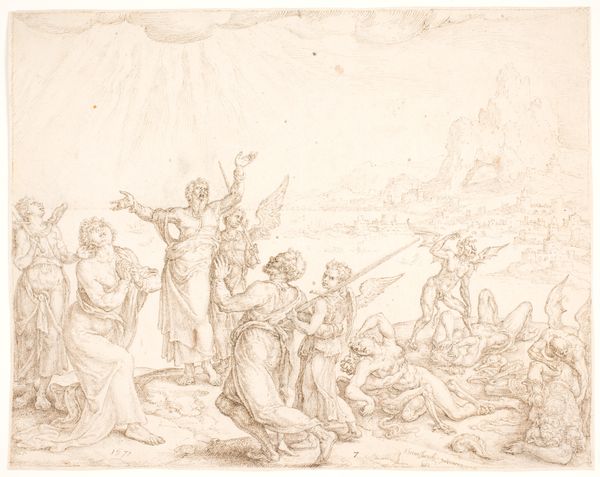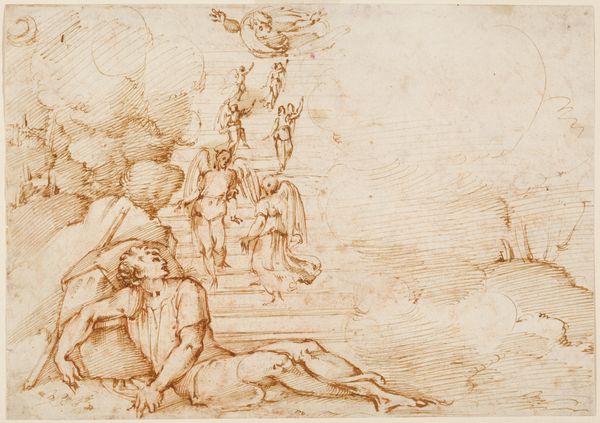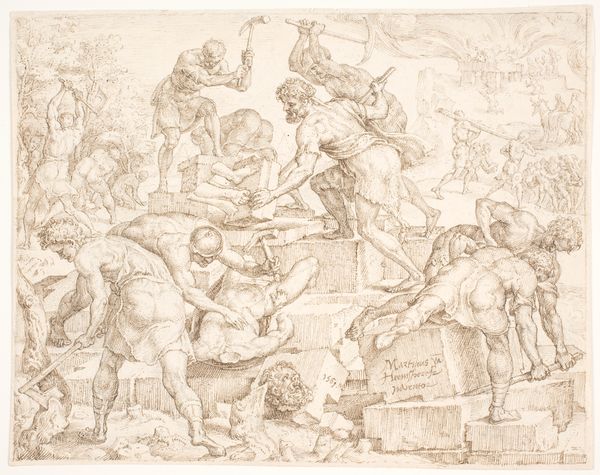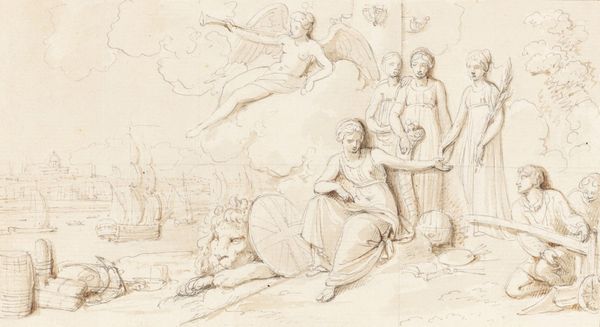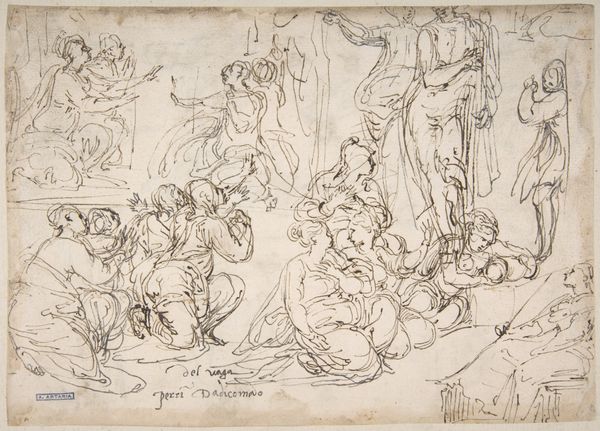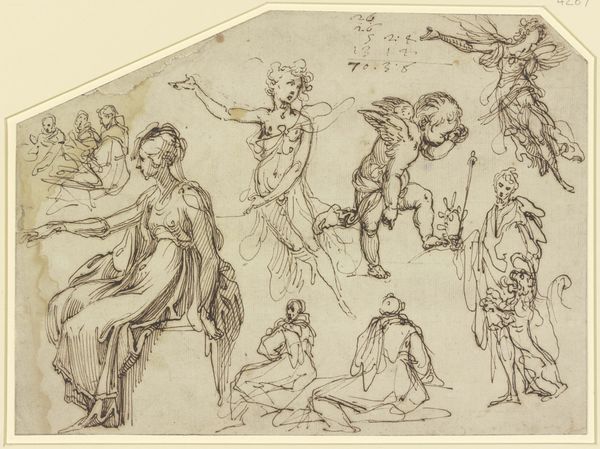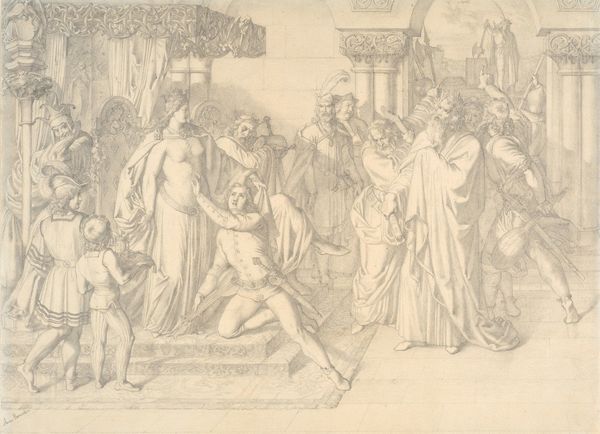
drawing
#
drawing
Dimensions: 224 mm (height) x 333 mm (width) (bladmaal)
Curator: This is Willem Panneels’ drawing, "The Wedding of Cupid and Psyche," created sometime between 1628 and 1630. Editor: It's lovely! The lines are so delicate and the composition feels light and airy. There's an undeniable sense of movement with all those figures in such dynamic poses. Curator: Absolutely. Panneels, working in the orbit of Peter Paul Rubens, would have been deeply engaged with disseminating classical narratives to broader audiences. Mythological subjects like Cupid and Psyche resonated with humanist values emphasizing love, beauty, and the pursuit of knowledge. Editor: It’s incredible how much information is conveyed through just the line work. The varying weights create a hierarchy and sense of depth. Take the cherubs surrounding the central figures, they're almost floating, adding to the ethereal mood. I also notice they are being drawn on by some creatures on the waves. Curator: Right, Panneels likely intended this as a study, not necessarily for public display. Such preparatory sketches were crucial for large-scale paintings, engravings, or tapestries, circulating artistic ideas among studios and patrons. Editor: Thinking of the piece formally, note the central placement of Cupid and Psyche who appear to be deeply intertwined, it serves to direct our attention, almost creating a stage where their union is performed. Their almost reclining, vulnerable bodies are so engaging, this allows the viewers to create empathy. Curator: Precisely, and let's not forget that the tale of Cupid and Psyche, popularized by Apuleius in *The Golden Ass*, was ripe with social and political allegory. Psyche's journey symbolized the soul's purification through trials and tribulations, reflecting moral lessons often promoted by religious institutions of the time. Panneels likely chose this story, understanding the symbolism within the tale and what he wants the viewers to think. Editor: Seeing the mastery of line and form gives one an appreciation for how artists could prepare something so visually complex. Curator: Agreed. Viewing the drawing in the Statens Museum for Kunst reminds us of its crucial place in art history and that even sketches could function as critical cultural and social documents in their era.
Comments
No comments
Be the first to comment and join the conversation on the ultimate creative platform.

